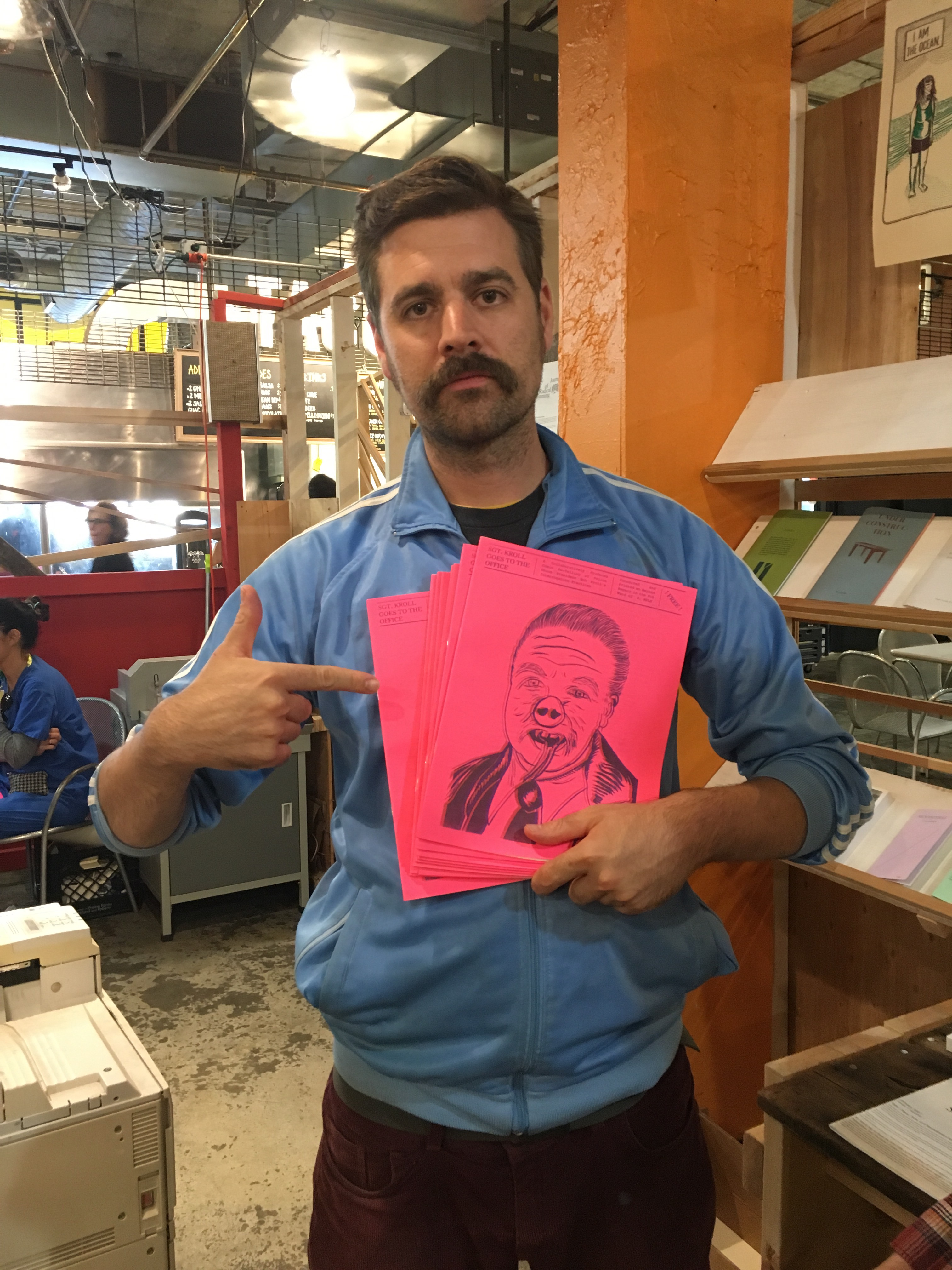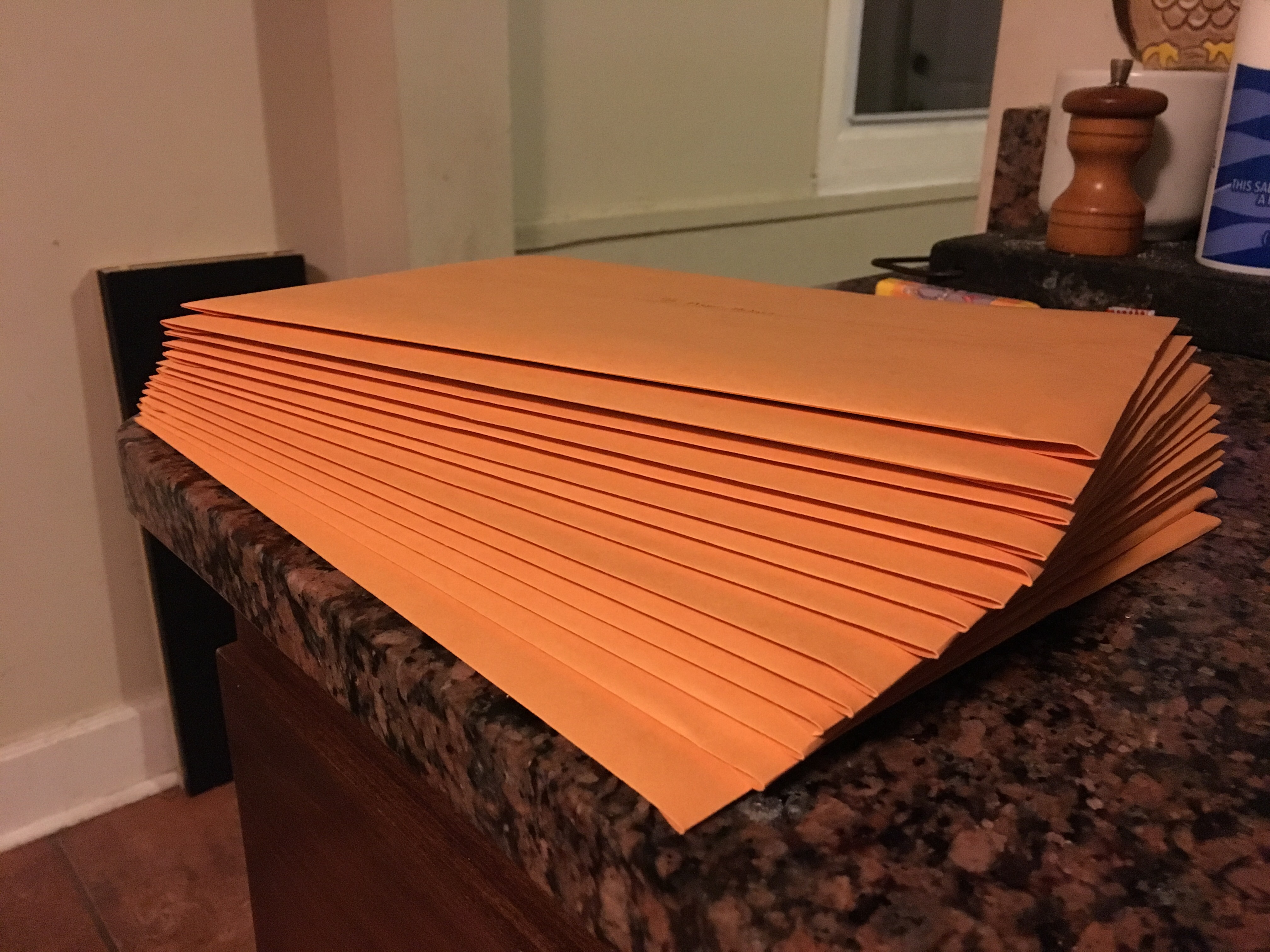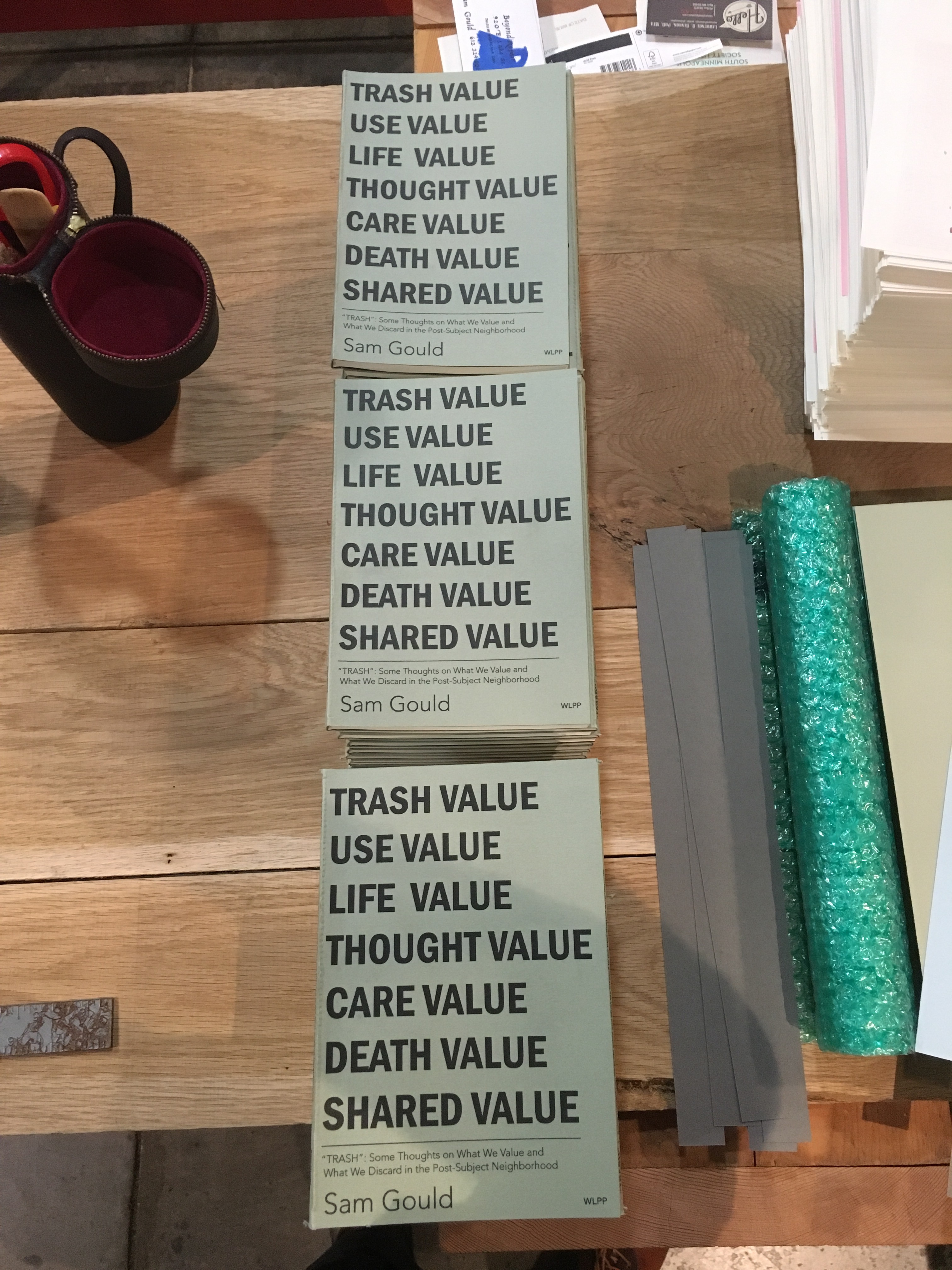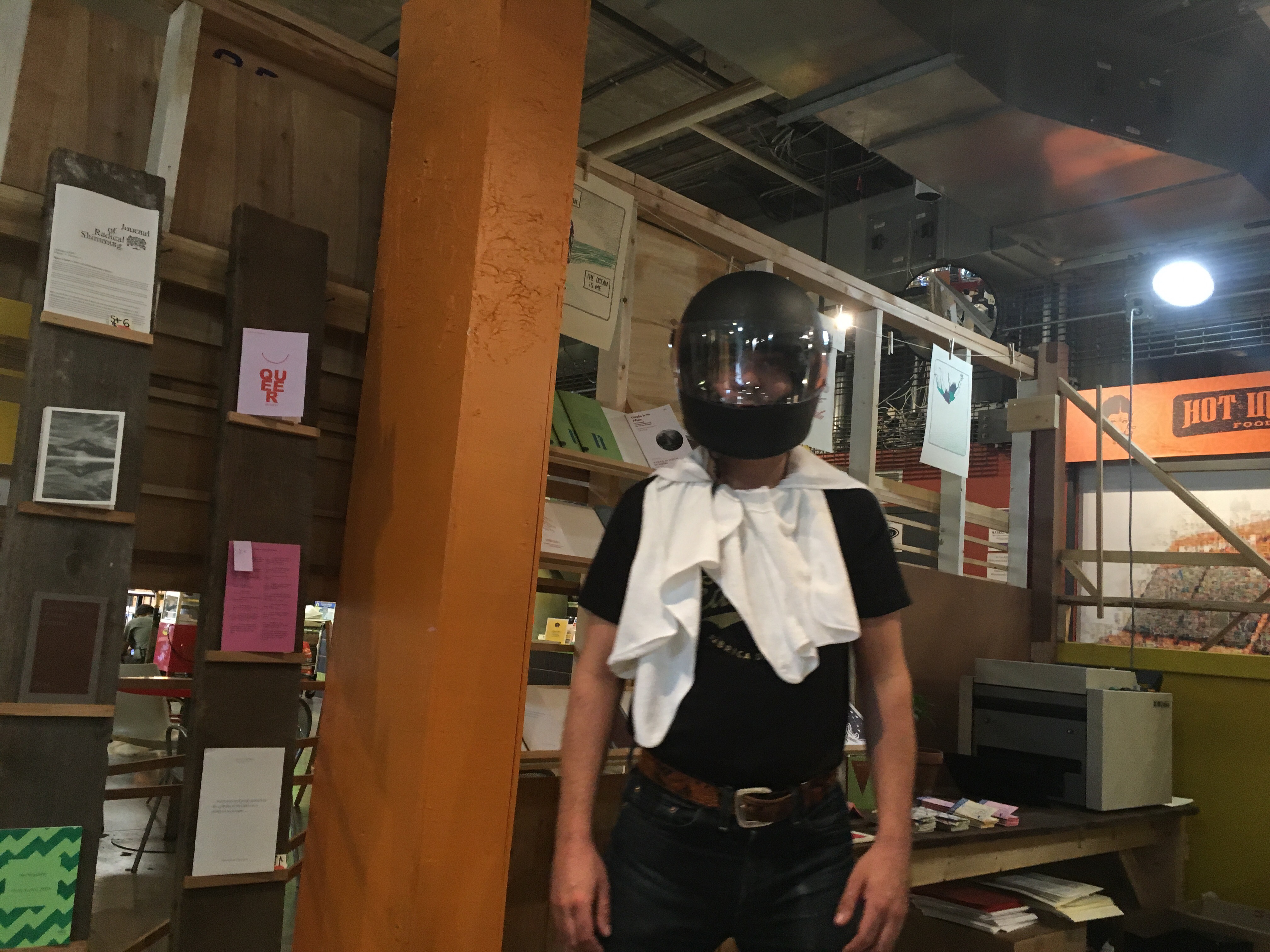“Love takes off the masks that we fear we cannot live without and know we cannot live within. I use the word “love” here not merely in the personal sense but as a state of being, or a state of grace – not in the infantile American sense of being made happy but in the tough and universal sense of quest and daring and growth.”
-James Baldwin, The Fire Next Time
Notebook
“You’re supposed to get all these shiny things and then go onto better things, right? But I had to think about my impact. How can I make a global impact if I haven’t even had an impact on my own community? Graduate school will always be there. This won’t.” – Mei Lum, new owner and project manager of W.O.W.
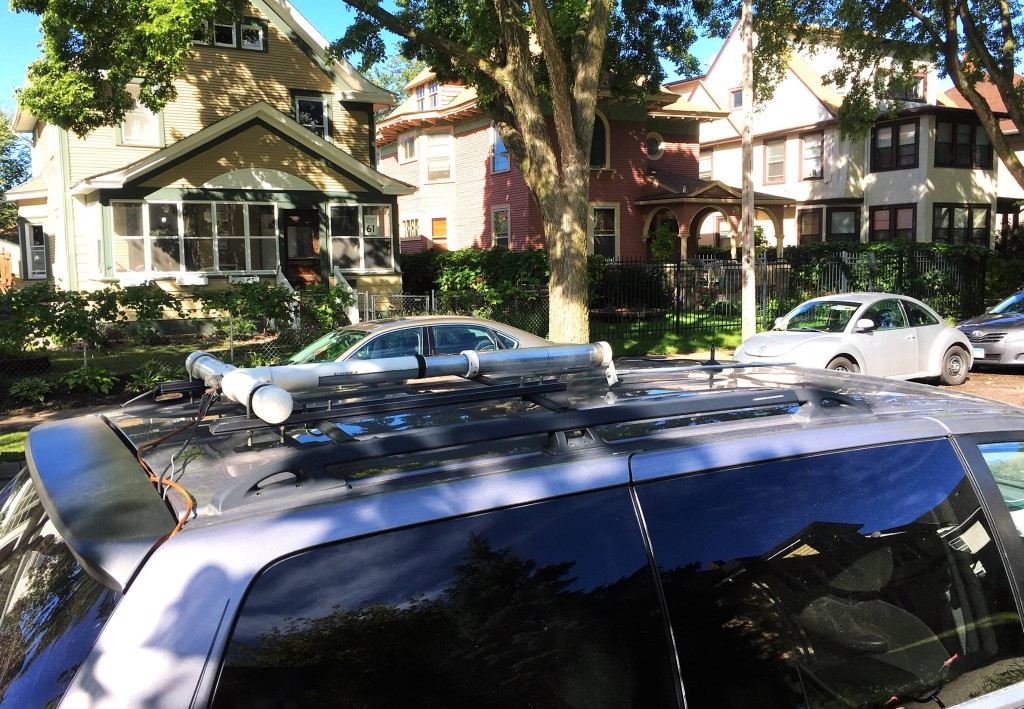
About a half-hour ago I was sitting here in Beyond Repair with Steven and had a bit of a shock. Who stepped into the Midtown Global Market, looking around, confused, not sure where to go? None other than MPD Police Federation President, Bob Kroll. He soon walked off, looking for something. Intrigued, I left Steven in the shop and walked around the market looking for Bob. Was he searching for us? If not, was he hungry? Where would he eat?
It seems though, while I was gone, Bobby found his way to the shop. He came in, saw a stack of Sgt. Kroll Goes to the Office, took about four or five, and avoiding any eye contact or interaction with Steven of any kind, quickly walked out.
I’ve been extremely happy, and frankly somewhat surprised, at the overwhelmingly positive reception this action has elicited. Both from the public at large, as well as elected officials in MPLS city government. Furthermore, it seems the action has been effective enough to get back to Lt. Kroll, and drive him across town to what he refers to in the comic as our “shit-hole neighborhood!” But hey, art will compel you into worlds that, prior to exposure, one would never dare to venture. I congratulate Lt. Kroll for, once again, braving the wilds of South MPLS.
All this said, I feel it is important for me to make this public; after the release of Sgt. Kroll Goes to the Office many people have urged me to publicly state the fact that Kroll, MPD, and their allies could retaliate in some way. Maybe, maybe not. But I agree that it is important to state that this possibility is, in fact, logical to consider and on my mind.
As an example, after the production of the comic was made public, but not yet released, the car in the above photo parked directly outside our home one afternoon. Having constructed low-wattage radio stations in the past I was interested, but also confused, by the DIY antenna apparatus on the roof of the vehicle. Something was off with its construction and orientation. I took a photo and sent it to a friend who is far more knowledgeable in that area than I am. He stated that, while not definitive, his guess was that it was a “cell phone sniffer.” What’s that? Well, myself and the small group who organized the visit to Mayor Hodges house last November, on the night the police were cracking down at the 4th Precinct Shutdown, are well aware of what it is. Area journalists, through a FOIA request, were able to find out as well. It’s a device that can read your text messages and listen in to your phone calls. It’s a tactic that MPD used that night and what allowed them to meet us at the Mayor’s house in advance of our arrival. And who knows, maybe it’s what is on top of the van outside our home in this photo. Or maybe not.
All of this sounds terribly psychotic and paranoid. But paranoia often arises out of social landscapes that speak towards something larger than each singular, seemingly fantastical, worry or suspicion. A kernel of truth exists in each.
So, if I start getting pulled over a lot; if we suddenly have numerous coding violations on our home; if, god forbid, DHS and MPD knock down our door over alleged child abuse accusations (which happened not long ago to a friend here in town who is critical of the police and their tactics; if I happen to be walking home and have the shit beat out of me, well, we all know who’s hand is at play. (Hi, Bobby!)
And this goes for ALL the artists involved in its production, and everyone else helping with its distribution as well.
I was sad to miss Bob when he visited the shop. I genuinely would have liked to have talked to him about his actions and ours. I called the Police Union a short while after we missed one another, but he wasn’t there. So I left a message on his voicemail inviting him to call me back to talk about the work. Maybe even have a book signing at the shop?
So Bob, it’s apparent that you are, in fact, paying attention to all this. I invite you to talk about it, but please don’t hit me – or accuse me of anything, or fuck with my kids, or listen into my phone calls or read my emails – let’s just talk.
I’ll be at Beyond Repair noon tomorrow. See you here. I’ll buy you a coffee.
As we rarely write letters any longer, and so much correspondence, even those that we consider “private” still have the tinge of the public sphere surrounding them, will the biography ever be the same again? What stories will we tell ourselves of our shared pasts and unique historical moments when, so much of it, was written under the influence of low-dose narcissism?
Fri, Oct. 14, 2016 ⁄ 7:00–9:00pm
On Streetopia and Creative Counter-Measures Towards Gentrification: A Talk and Conversation with Erick Lyle
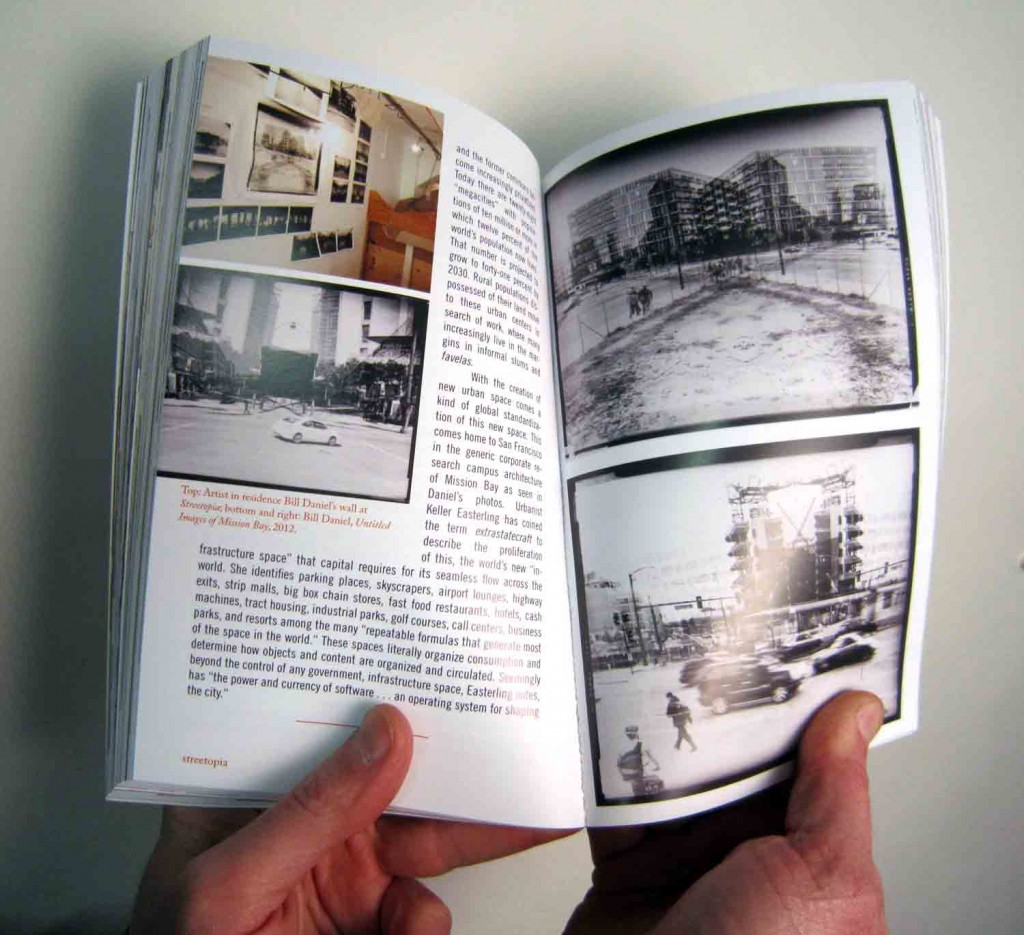
Beyond Repair‘s Crisis Logic and the Reader series presents: Erick Lyle, reading from and discussing his book Streetopia!
(This event will take place at Moon Palace Books: 3260 Minnehaha Ave)
After San Francisco’s new mayor announced imminent plans to “clean up” downtown with a new corporate “dot com corridor” and arts district–featuring the new headquarters of Twitter and Burning Man–curators Erick Lyle, Chris Johanson and Kal Spelletich brought over 100 artists and activists together with residents fearing displacement to consider utopian aspirations and plot alternative futures for the city. The resulting exhibition, Streetopia, was a massive anti-gentrification art fair that took place in venues throughout the city, featuring daily free talks, performances, skillshares and a free community kitchen out of the gallery. This book brings together all of the art and ephemera from the now-infamous show, featuring work by Swoon, Barry McGee, Emory Douglas, Monica Canilao, Rigo 23, Xara Thustra, Ryder Cooley and many more. Essays and interviews with key participants consider the effectiveness of Streetopia’s projects while offering a deeper rumination on the continuing search for community in today’s increasingly homogenous and gentrified cities.

Crisis Logic and the Reader: As sociological studies and our own experiences have shown us, crisis manifests relationships and modes of action uncommon outside of states of disruption. Egalitarianism, collaboration and cooperation, crisis highlights utopic possibilities in the midst of the destruction of the day-to-day.
But along with crisis comes anxiety. That boost of adrenaline, beneficial in small immediate doses, fracturing our clarity and composure over time.
Crisis Logic and the Reader, an area of inquiry centered at Beyond Repair this fall, promotes the notion of the “social life of reading” as a long-term, daily alternative to the logic which arises out of singular moments of crisis. This collective, and distributed, conversation will take form in multiple locations around the Twin Cities from Oct. – Dec. 2016, through talks, symposium, publications, art installations and more at Beyond Repair, St. Catherine’s University, Minnesota Institute of Art, and further afield.

Can’t stop into the shop to pick up your own free copy of Sgt. Kroll Goes to the Office? Feel free to read the online version here. And please share!
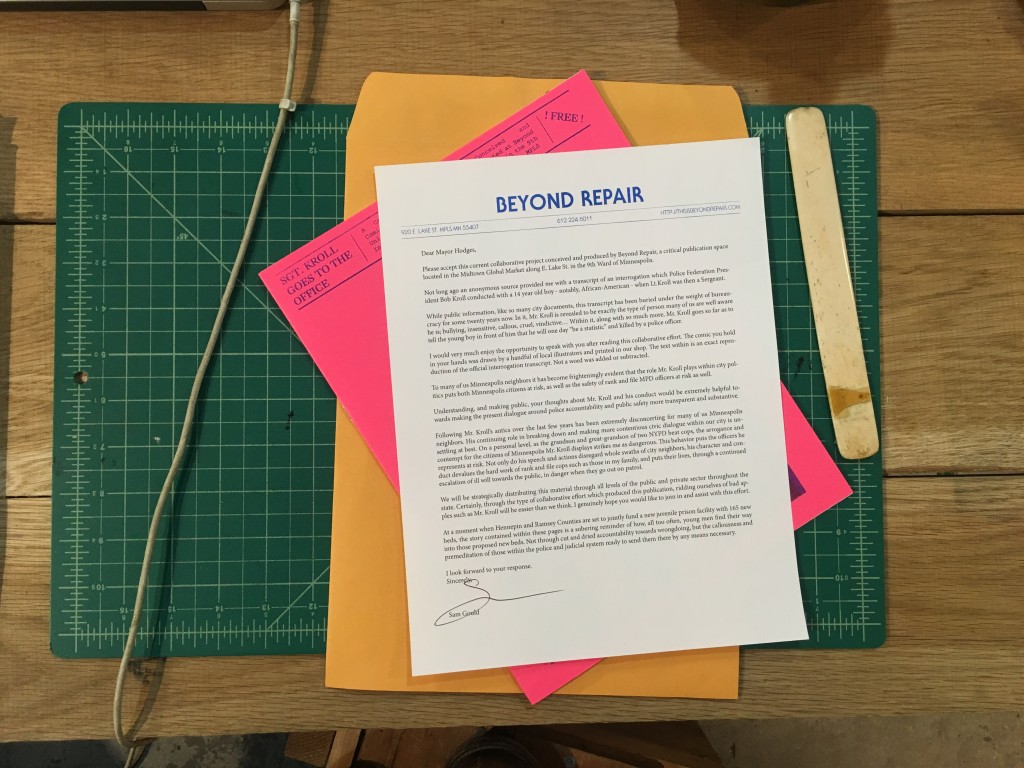
Not long ago an anonymous source provided me a transcript of an interrogation which Police Federation President Bob Kroll conducted with a 14 year old boy – notably, African-American – when Lt.Kroll was then a Sergeant.
While public information, like so many city documents, this transcript has been buried under the weight of bureaucracy for some twenty years now. In it, Lt. Kroll is revealed to be exactly the type of person many of us are well aware he is; bullying, insensitive, callous, cruel, vindictive… Within it, along with so much more, Lt. Kroll goes so far as to tell the young boy in front of him that he will one day “be a statistic” and killed by a police officer.
A few weeks back, in collaboration with Uncivilized Books, and with the assistance of eighteen comics illustrators, we gathered together at Beyond Repair for an afternoon of drawing wherein we used this transcript – word for word without a single alteration – as the script to illustrate the narrative played out between this young man and Lt. Kroll. In due time we printed 300 copies of this comic with the intent to strategically distribute it around Hennepin County.
On Thursday morning I dropped off copies for each City Council Member, as well as the Mayor. Soon copies will move further afield to Governor Mark Dayton & Lt. Governor Tina Smith, state senators and rep’s, up and down the line.
In the short amount of time that the entire City Council has had editions of the comic I have been impressed and gratified by the response I have received. The energetic and proactive responses of Council Members Jacob Frey, Elizabeth Glidden, Cameron Gordon, Lisa Bender, and Alondra Canohave shown that a good amount of our elected officials in Minneapolis understand how the actions, conduct, and character of Lt. Kroll derails any substantive civic discourse around police accountability and public safety, and how that any long-reaching, thoughtful dialogue around these issues cannot take place when the loudest voice in the room displays the dismissive, aggressive, counter-productive tendencies so evident in the actions and mannerisms of Bob Kroll.
Yesterday I met with a local journalist whose focus is the police beat in the Twin Cities. Pleasantly enthusiastic, he nonetheless wondered, “why this story and why now?” What is the purpose of devoting page space to a twenty year old incident? My reaction was, because it isn’t an old story at all. What the comic illustrates is how we continuously live within and build off of past actions within the present tense.
The narrative told within the comic is common. All too common. It’s played out each and every day in our police precincts and courtrooms, and there are mile high stacks of similar transcripts which speak towards the same callous, and arguably proactive indifference which was directed towards this young person.
The story within the comic we produced plays out not long after the Clinton crime bill takes effect in 1996. What we’ve seen in those twenty years is three strikes and mandatory minimum laws enacted, in parallel to the excessive funding of prisons (both public and private) and budgetary increases for prosecutors the country-wide. Hand in hand with these “tough on crime” funding booms we’ve experienced the defunding of public defenders, treatment and advocacy programs, education, and an astonishing array of social services.
Kroll’s “I don’t care if you did it or not” attitude within the transcript plays directly into this entire ecosystem to the degree in which that indifference becomes procedural. Kroll plays a role. At a time when Hennepin and Ramsey Counties are set to jointly allocate $18 million dollars to fund 165 new juvenile jail cells, Kroll fills the role of processor within that system. A cog, he greases the wheels within the machine so that those beds get filled, primarily with young black and brown bodies, a means to ensure and justify those callous expenditures and the continuing rhetoric that so aggressively, and profitably, devalues human life within it.
We all know that Kroll is a clown. A blustering, blowhard of a figure put into place to distract, disorient, and misinform so that nothing, absolutely nothing of substance gets done. We watch him yelling, stumbling around the civic social landscape, pantomiming white supremacy and patriarchy to the bleak amusement of many. So, yeah, a comic as a method to discuss his role within the prison / judicial industrial complex makes sense, right? It allows us to see Kroll, and more importantly, the role he plays, for what it is.
But as we all know, clown’s aren’t really funny. For some people clown’s are even deeply scary. And when real people, not those playing a role, or those masquerading as human(e), find their lives on the line this sideshow that Kroll serves as a leading character within turns from farce to drama on a knife’s edge. Lives are ruined; silenced, shut off to the questions and qualities of life that concern us all.
It’s not simply the tenor of dialogue that Kroll disrupts, it’s his ability to shut down and silence other voices within the social space wherein the dialogue plays out that matters. The cacophony surrounding his clownishness disrupts the growth or productive complication of our shared narrative called democratic voice. It stifles the narratives ability to flourish and reflect the many different experiences lived in Minneapolis. At its most benign, his antics make the narrative super repetitive and outright boring.
It’s time for Act Two and yet the script for this second act within our civic conversation has yet to be written. In imagining the narrative about to unfold before us, and the characters who might take center stage, it’s time for the clown to exit, stage right.
Stop into Beyond Repair to get your own copy of Sgt. Kroll Goes to the Office. It’s free, of course. After reading it, please share your thoughts. Unless we talk about the new roles, the new characters and imagined vistas available to us, the script will not change and the play will remain the same, going on as it has for the last twenty years. To the delight of few, the boredom of many, and the silencing of far too many.
We write this script together.
Mark’s costumes are getting better and better.
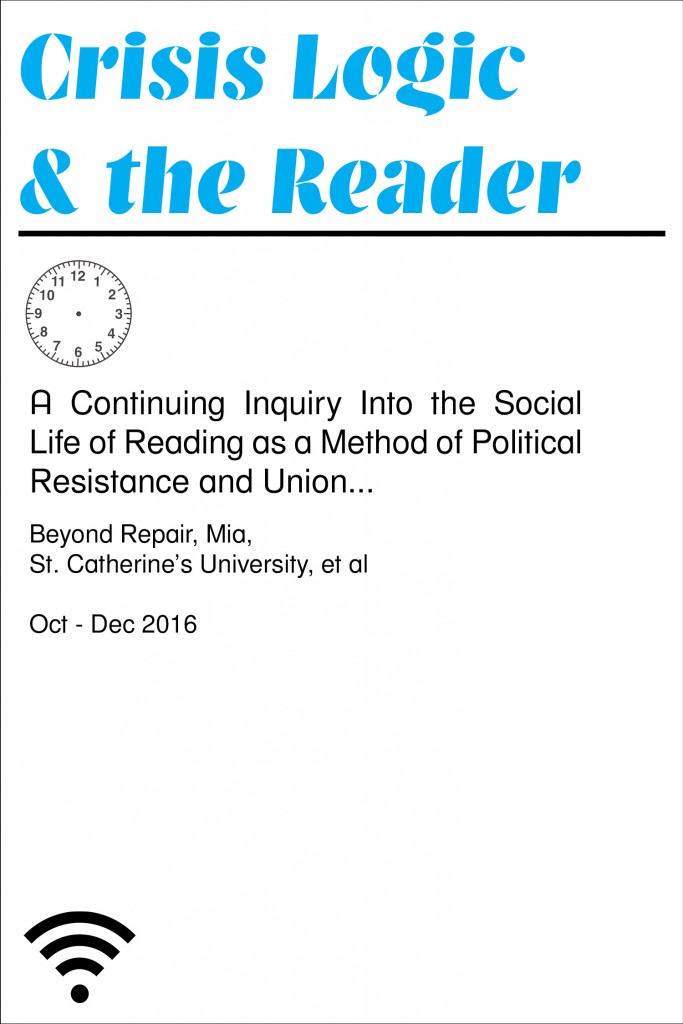
Coming soon w. Dan S. Wang, Erick Lyle, Andrea Jenkins, Monica Haller, and many more…
Sat, Oct. 15, 2016 ⁄ 2:00–8:00pm
Surround Sound: A Neighborhood Record Lathe Fundraiser

Join the folks who facilitate Beyond Repair, the 9th Ward publication experiment, for a day long festival of music, food, and more to benefit the refurbishment of a new piece of equipment for the shop: a mid-century record lathe able to produce vinyl records in real time. When up and running our lathe will, in just the same fashion that Beyond Repair publishes books, zines, and posters everyday, be able to lathe vinyl records. Moving around the ideas and desires, sounds and voices, of 9th Ward residents as well as compatriots further afield our lathe will assist in producing an ever expanding Anthology of 9th Ward Folkways! Noise! Mariachi! Cumbia! Dhaanto! Hip Hop! Voices and experiences that define our lives here in the ward together as neighbors.
Tiny Diner has generously donated the proceeds of food and drink to the fundraiser, and has opened their space for day long festivities. Among more to come, Eastlake Brewery has generously dontated beer for the occasion!
Current Beyond Repair resident Derek Maxwell will unveil and make use of his home-made sound system during Surround Sound, inspired by the early dub and hip-hop systems that brought neighbors far and wide together in celebration and resistance from Kingston to the South Bronx.
Long-time collaborator and neighbor Steven Matheson has organized a stellar and growing ensemble of performers, which so far include:
American Cream
IE
AD/VR
Steve Palmer
Paul Metzger
Bullhead City
Paul Fonfara
More news, ideas, and performers to come!
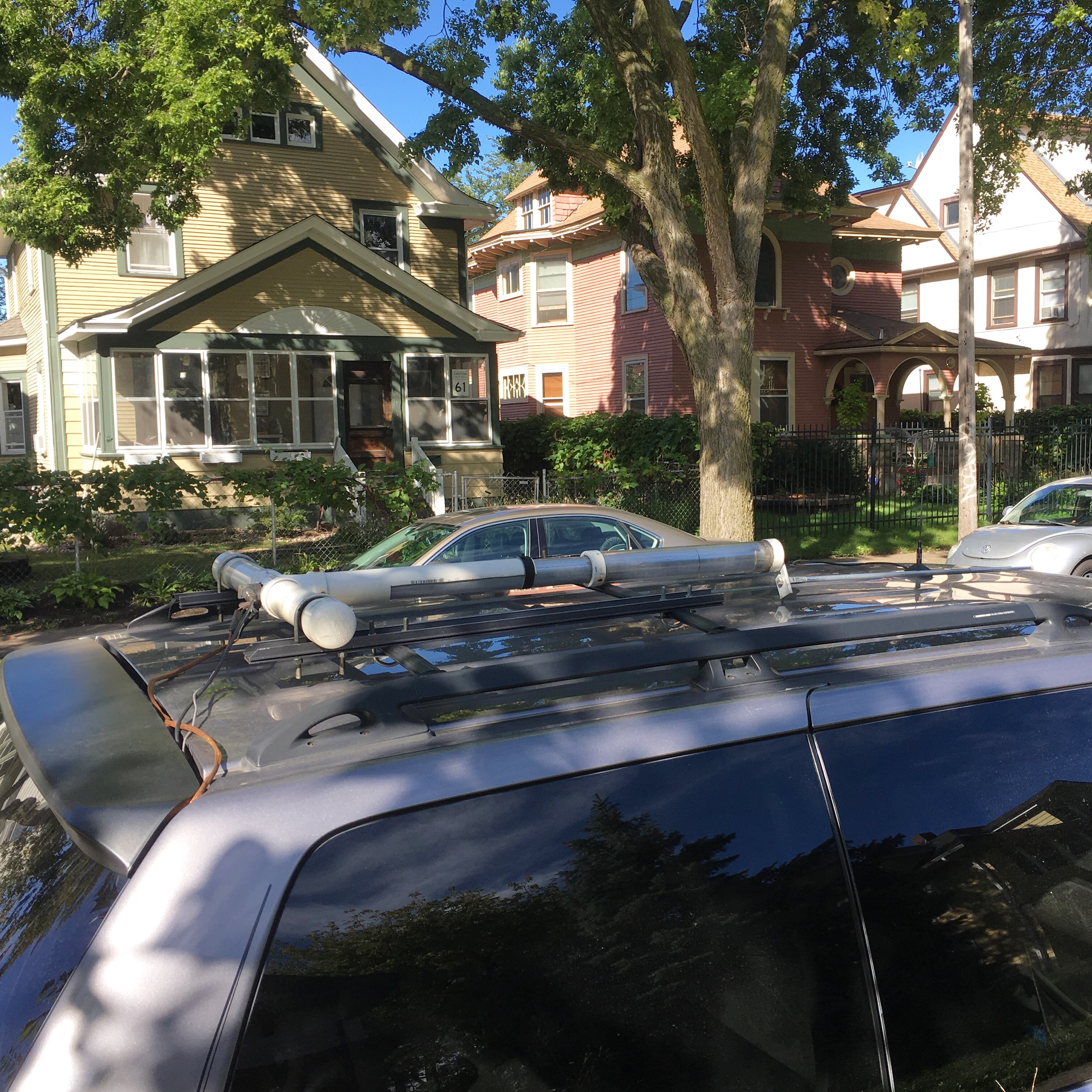 Considering recent activities within Beyond Repair it’s somewhat disconcerting, for many reasons, to have discovered this DIY “cell phone sniffer” posted up directly outside of Sam and Laura’s house this morning. If anyone sees this van driving around the ward, please get the plate # and let us know.
Considering recent activities within Beyond Repair it’s somewhat disconcerting, for many reasons, to have discovered this DIY “cell phone sniffer” posted up directly outside of Sam and Laura’s house this morning. If anyone sees this van driving around the ward, please get the plate # and let us know.
Howdy!
Sam is off on a jaunt around the East coast (Yonkers, NYC, and Troy NY, as well as Philadelphia) talking about Beyond Repair, ideas and certain books that we’ve published this far. In particular, those books being “Trash” and Against the Picture – Window: A Time of the Phoenix Compendium.
If you are in Troy, NYC, or Philadelphia go check it out.
Wednesday, Sept. 21 @ Publication Studio – Hudson
Thursday, Sept. 22nd @ Printed Matter in conversation w/ Mary Walling Blackburn
Friday, Sept. 23rd @ Slough for a panel discussion on the poetics of self-determination during the catalog release for Organize Your Own
A few weeks back we hosted Lisa Schonberg and Anthony Brisson – who perform together as Coordination – for a performance on the Midtown Greenway under the Bloomington Ave. bridge. We didn’t have permission to do so, but we did it because it felt right. It felt like sharing, not taking. Sharing should be encouraged.
Lisa is someone I’ve known for a long time. We lived around the corner from one another back in Portland, and she helped take care of Esme and Honora in the six months between the time they were born and we moved from Portland to Minneapolis. Lisa and Anthony were in town visiting Anthony’s family and since they’d be around we decided to do some work together. This turned out to be them creating a graphic score – a semi-sequential drawing to be played along to – which we printed at the shop, to be handed out on the Greenway as Coordination performed.
I was really interested in not simply setting up a show with Lisa but finding a space within the neighborhood which, however briefly, we could slightly, creatively disrupt and then, through our packing up and going home, leave the way we found it. Nonetheless, leaving the traces and residue of our convergence and trespassing, our reconfiguring of the space around us by altering its possibilities; bike lane, sunset stroll, weirdo setting up a generator and playing abstract compositions under a bridge. Yeah, why not? This sort of action was something, as kids in our early twenties, Lisa and I learned to adapt to, and find agency from in the pre-hipster Pacific Northwest.
Anthony and Lisa brought some equipment with them and borrowed a few items from Anthony’s father, an electrician out in White Bear Lake who also makes time to play music. Derek Maxwell, Beyond Repair’s current “public-maker in residence” helped source a drum set and a generator.
As we lugged the generator down the steps off Bloomington a small crowd began to gather. People asked us what we were up to as Lisa set up the kit. The sun, slowly began to set, lowering under each bridge, getting closer, and darker, one by one until all that was left was the light of the nearby buildings and the halogen lamps dotting the Greenway landscape.
To lessen the noise of the generator from interfering with the music, Derek and I moved it down the Greenway a bit, which shut it off with our jostling it back and forth. When I tried to start it again, the rope broke off in my hand. This led to our delaying the performance about an hour as, one by one, we went to one another’s houses looking for the right socket to unbolt the housing that would allow us into the start to re-spool the rope. The trouble didn’t end once we found the right socket. The generator didn’t fire up right away, and subsequent attempts broke the rope on multiple occasions. In the middle of this I had an idea. Our neighbor Jess had skateboarded down with her husband Tom and their kids. Jess was wearing running shoes with nylon laces, which to my estimation, were unlikely to break. In due time, tying Jess’s shoelace to the remaining rope and handle we got the generator back up and running and soon the performance began.
The crowd had dwindled a bit, but it didn’t really matter. It was the experience between us – all the folks who decided to take part in creating this convergence – that interested me most; a convening of intent and a question shared between us – “Well, what do we do after this?”
About three quarters into the performance a police cruiser rolled up. Both Lisa and I, from those days back when – in parks, basements, warehouses – figured we were packing it up. But Lisa and Anthony kept playing. The cop got out of his car, and walked over to the other side of the Greenway to watch and listen. I walked over to say hello. He asked what was going on, and I told him. We began to talk and he seemed interested in what we were up to. This looped into a long conversation about public space, performance, and simply folks getting together in the neighborhood to convene and make use of the vast, yet all too ofter underused, social and environmental landscape around us. Just as the cop was about to walk away I notice his badge – “Thunder.”
“Oh, wait a moment,” I said, “Officer Thunder, you’re our new beat cop, aren’t you?”
He grimaced for a moment, “Oh, yikes. What have you heard about me?”
I mentioned how I’d seen news about his new post, and that I was happy to see him out and about in the neighborhood, saying hello, checking up on things, and frankly, doing what a beat cop should be doing, in my mind: making their presence known and looking out for how to help and how they can be a part of the neighborhood.
I couldn’t have asked for a better introduction to Officer Thunder. With all the tumult of late, it was kind of amazing to have an unguarded and thoughtful conversation in public with a cop.
I wondered that night, and in the days following, what could be learned from that interaction, so different than any I have had in a long time. When was the last time I saw a cop smile at me, or anyone else for that matter? Not immediate become defensive, or keep their hands close to their weapons? Maybe I’m in the wrong company, but this often seems to be the case.
Officer Thunder opened up another idea of what police in our neighborhood could look like.

